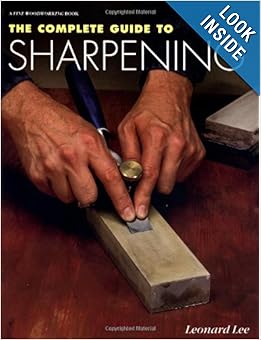bugbear
Established Member
Jacob":1zso7nuo said:OK so they are good for end grain - but end grain is no problem anyway, given any sharp plane EP 45º.
Leonard Lee begs to differ - with evidence, not assertions.
BugBear

Jacob":1zso7nuo said:OK so they are good for end grain - but end grain is no problem anyway, given any sharp plane EP 45º.
yetloh":2c2bn6yo said:I don't bother too much about EP and certainly not when it comes to block planes. The exception is for difficult grain and if I am facing that I just reach for a little 60 deg EP plane without even considering a block plane. It works for me and that is all that matters.
Jim
woodbrains":1gc34l7u said:yetloh":1gc34l7u said:I don't bother too much about EP and certainly not when it comes to block planes. The exception is for difficult grain and if I am facing that I just reach for a little 60 deg EP plane without even considering a block plane. It works for me and that is all that matters.
Jim
Hello,
And if someone doesn't have a 60deg EP plane, they can effectively get one with a higher bevel on a LA block or a back bevel on their BD planes!
What is your 60 EP plane. A custom job or a HNT Aussie thing or what?
Mike.









David C":193lwvwa said:Well a 15 degree back bevel in a bench plane is one easy way.
David
yetloh":193lwvwa said:Mike,
Its the lowliest of Holteys - an 11S with boxwood infill and no adjuster, a lovely little thing. The blade can be reversed, turning it into a scraper plane if the going gets really tough but I don't often find it necessary.
Jim
I just wondered - this Len Lee geezer, he's not a tool salesman by any chance is he? Keen on us buying a lot of planes, and multiple blades to go with them? (5 bevels thats 5 blades per plane at £30 ish say 3 planes that's, er, £450 not counting the planes themselves another £600 ish) say £1000 on block planes alone? :shock: :shock: :lol:bugbear":2fs8zena said:Jacob":2fs8zena said:OK so they are good for end grain - but end grain is no problem anyway, given any sharp plane EP 45º.
Leonard Lee begs to differ - with evidence, not assertions.
BugBear
Only if specialising in mouldings. There isn't a generic "craftsman's kit" there are lots of different trades. Most woodworking has no complicated mouldings. I've just been reading "From Tree to Sea".woodbrains":1hcumxu5 said:Hello,
Simplicity is good and the fewer tools to do a job also good. If a well set up plane obviates a power sander, how is that more complicated? Most modern plane variants are just copies or versions of planes that were once common in the Stanley catalogue or had a wooden predecessor. have you looked at how many woodies were needed by a craftsman 150 years ago. 12 is just a half set of hollows and rounds with thier accompanying snipe bills. I reckon a tool chest would have upwards of 50 woodies in a craftsmans kit.
Mike.
JacobBTW what does Len Lee say abt ordinary chisel/plane sharpening? Is he into freehand etc or a committed training wheeler? I'm not going to buy the book to find out.[/quote said:When you look at the front page, it seems like training wheels have an important place in the book.

Enter your email address to join: